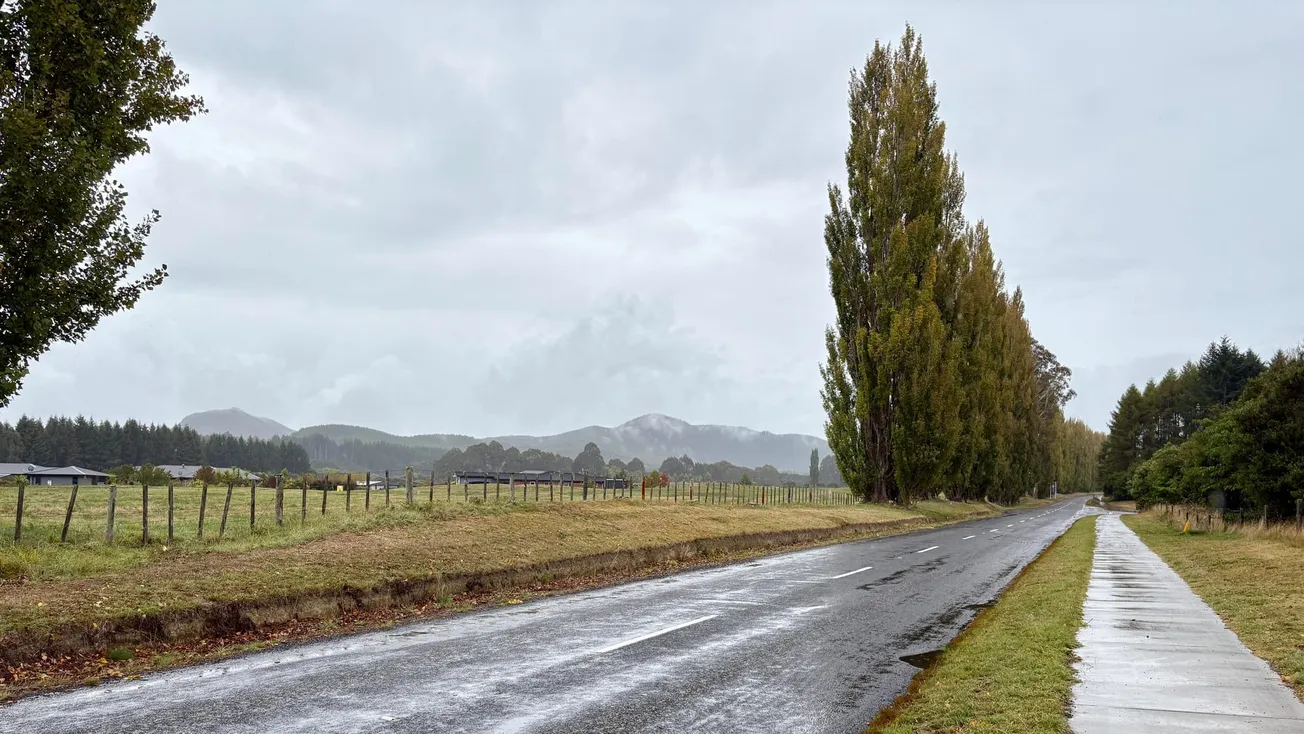The mistaken felling of several poplar trees on Kinloch Road had nearby residents up in arms last Wednesday (March 19) causing a flurry of social media posts and calls to Taupō District Council staff and representatives.
Around 15 years old, the trees had been planted as replacements or to fill gaps along the western side of the road, with the planting undertaken by members of the Kinloch Community Association in agreement with the Taupō District Council.
Community Concern
An early post to reaction on the KCA Facebook page said the team felling the trees "had authorisation from HEB who are TDC Maintenance Services" and that the council was investigating.
The trees had been grown from poplar poles purchased by the KCA and planted by a team led by John Leybourne, the post said.
What got some hot under the collar was that the mature poplars all down Kinloch Road, and a number along the lake shore near the Kinloch Esplanade, are protected trees in the Taupō District Plan – many listed as amenity trees, but some classed as notable, which carries a higher level of protection.
(The TDC said, through a media spokesperson on Monday, March 24, that an investigation showed the new plantings are not listed as amenity trees - though acknowledged they were cut down in error.)
As with most of the protected trees in the district, those in Kinloch are listed for their cultural, heritage or amenity value – rather than being rare specimens.
Council Response
In response to the calls, the council released an official statement saying a contractor had been instructed to fell some self-seeded poplars and gums that were growing too close to the road following a request from nearby residents.
"The trees to be felled were marked with paint and the arborist did this according to instructions. Five non-marked trees growing nearby were assumed to also be self-seeded and these were felled too."
The contractor had apologised for the mistake, said the council release, and would replace the trees at their cost.
"The original Holyoake poplars were not touched apart from to remove shoots appearing at the base of some trees."
Resident Reactions
One local resident said that when she stopped to question the contractors felling the trees just after midday on Wednesday that a council staffer was already on the scene having been alerted by someone in The Poplars subdivision.
"I'm a tree lover and these are iconic trees… I was sort of raving a bit, probably, because I was so upset," said the resident.
While she said her photos of the felled trees "don't look like much, lying rather sadly on the ground" the poplars were healthy and had obviously been consciously spaced.
She said the council noted its phone had been ringing hot.
"Those of us who live in The Poplars feel a bit precious about those trees."
Another caller to Taupō media said some of the stumps were around 200mm in diameter.
Previous Tree Incidents
It is not the first time the accidental felling of protected trees has upset residents in the Taupō district.
Late last year the Tūrangi community had to be placated after a listed mature oak tree in Taupahi Road had all of its lower limbs removed, leaving very little of the canopy.
The oak had been scheduled for maintenance work which was performed by a qualified council-contracted arborist, said Warrick Zander, the council's general manager strategy and environment, in a statement following the outcry.
But pictures of the extent of the limb removal make it clear the arborist thought the whole tree was to be dismantled.
In response to that incident the council asked Resource Management Act commissioner Bill Wasley to act as an independent expert and investigate the accidental near-felling with "a full review of the incident."
Wasley's investigation report was expected to be complete in early 2025 with a summary of the findings to be made publicly available.
However, in response to a media enquiry on Thursday (March 20) a council communication said that report was not ready for release yet.
(It could have been inferred from an earlier version of this story that the younger trees were protected with amenity tree status - which the TDC says is not the case.)






